Ruby Bridges: School Integration Trailblazer at Age 6
Ruby Bridges, at age 6, was a trailblazer, the first African-American student in an all-white elementary school in New Orleans in 1960.
Ruby's parents, Abon and Lucille Bridges, moved to New Orleans in 1958. Two years later, they volunteered to join a drive to integrate the New Orleans school system. Ruby and her family lived just a few blocks from a school, whose students were all white, but attended kindergarten a few miles away, at a school whose students were all African-American. Ruby was one of a group of students who passed a test, enabling them to take part in the New Orleans integration program. And so it was that on November 14, 1960, 6-year-old Ruby Bridges began attending William Frantz Elementary School. She walked into the school just ahead of and just behind some federal law enforcement officials, an No other students were at the school on that first day, and Ruby spent the entire day in the principal's office. The integration came about as a result of a court order, not as a result of a request from the school. All of the other students at that school were white. The parents of every other student ordered their children not to attend the school as long as Ruby Bridges was a student there. As well, all but one of the teachers refused to teach at the school as long as Ruby was there. The one teacher who didn't refuse to go to work at the school was Barbara Henry, a white teacher who was originally from Boston. Henry was Ruby's teacher for an entire year, with the just the two of them in a classroom.
Someone in that angry mob threatened to poison Ruby's food, so she brought her own food to school. Other people found other ways to try to unnerve Ruby, but she did not waver. Ruby had support from a child psychiatrist named Robert Coles, who met with her weekly and later wrote a book called The Story of Ruby Bridges. Coles wanted other children to know of Ruby's courage. Ruby's year at school wasn't easy. She had nightmares. For a time, she stopped eating the lunch that her family had prepared for her. She was already having to eat her lunch in the same classrom in which she spent the entire day with her teacher, with U.S. Marshals guarding the door; the Marshals would also escort her to and from the restroom. The year wasn't easy for her family, either. Her father lost his job but was eventually offered another one at another business. Her grandparents were forced to leave the land where they had been sharecroppers for 25 years. But Ruby Bridges made it through that first year at school and came back again the following year. Barbara Henry found herself without a contract for Ruby's second year in school and returned to Boston to find work. By this time, Ruby no longer needed the escort of U.S. Marshals and even walked by herself to school, where she attended classes with other (white) students.
Ruby is now Ruby Bridges Hall. She still lives in New Orleans, with her husband, Malcolm Hall. They have four sons. Ruby's four nieces followed in her footsteps at Frantz School, as did other African-American children. Ruby volunteered at the school for a time.
President Bill Clinton awarded Ruby the Presidential Citizens Medal in 2001. California's Alameda Unified School District dedicated a new elementary school to her in 2006.
Ruby met President Barack Obama at the White House in 2011. The following year, she received an honorary degree from Tulane University. Ruby's story has been the subject of a well-known country song, a TV movie, and an exhibit at the Children's Museum of Indianapolis. |
|
Social Studies for Kids
copyright 2002–2025
David White



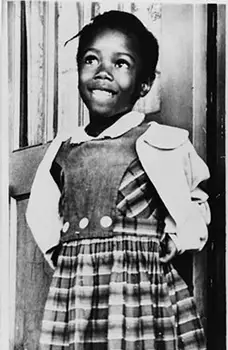 Ruby was born in Tylertown, Miss., in 1954, the same year that the actions of Linda Brown and her family and those of other African-American students and their families resulted in a movement that culminated in the famous Supreme Court decision
Ruby was born in Tylertown, Miss., in 1954, the same year that the actions of Linda Brown and her family and those of other African-American students and their families resulted in a movement that culminated in the famous Supreme Court decision 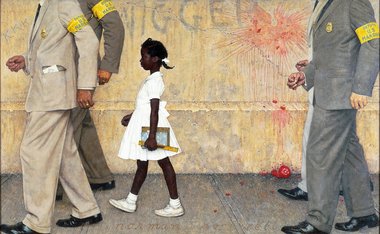 action later commemorated in the Norman Rockwell painting The Problem We All Live With.
action later commemorated in the Norman Rockwell painting The Problem We All Live With.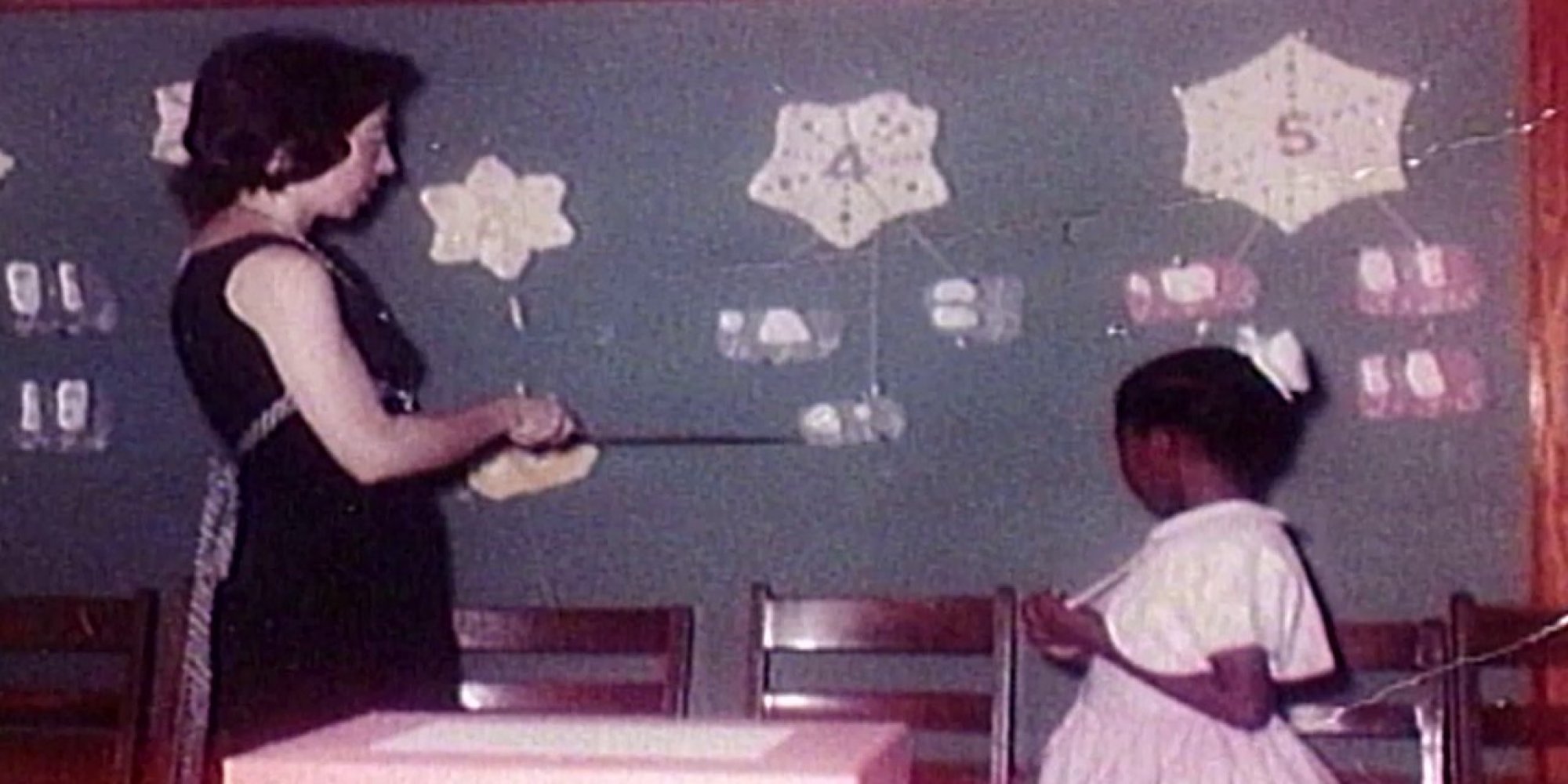 On Ruby's second day at school, a Methodist minister named Lloyd Foreman walked his 5-year-old daughter Pam to school, through an angry mob that had gathered to protest Ruby's presence at the school. Other students eventually came back to the school, although they didn't attend class with Ruby.
On Ruby's second day at school, a Methodist minister named Lloyd Foreman walked his 5-year-old daughter Pam to school, through an angry mob that had gathered to protest Ruby's presence at the school. Other students eventually came back to the school, although they didn't attend class with Ruby.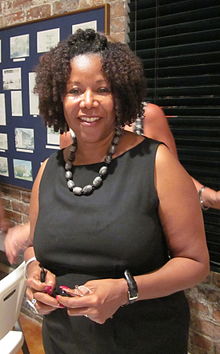 Ruby finished grade school at Frantz School and then graduated from an integrated high school, Francis T. Nicholls School. She studied travel and tourism at business school and got a job as a travel agent with American Express.
Ruby finished grade school at Frantz School and then graduated from an integrated high school, Francis T. Nicholls School. She studied travel and tourism at business school and got a job as a travel agent with American Express. 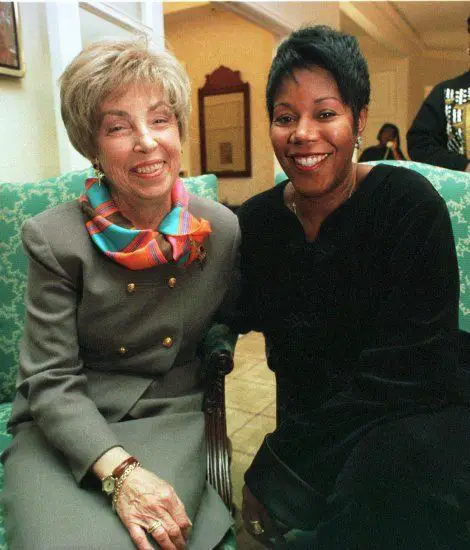 When Ruby was 45, she established the Ruby Bridges Foundation, which aims to create change through education. About the same time, Coles, the child psychiatrist, published his book about Ruby. Also about the same time, Ruby and her teacher, Barbara Henry, were reunited on the The Oprah Winfrey Show.
When Ruby was 45, she established the Ruby Bridges Foundation, which aims to create change through education. About the same time, Coles, the child psychiatrist, published his book about Ruby. Also about the same time, Ruby and her teacher, Barbara Henry, were reunited on the The Oprah Winfrey Show.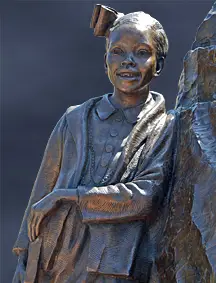 In 2010, Ruby attended her 50th-year reunion at Frantz School and reunited with Pam (then Pam Foreman Trestroet), the first white child to come back to school after Ruby arrived. The school in 2014 unveiled a statue of Ruby.
In 2010, Ruby attended her 50th-year reunion at Frantz School and reunited with Pam (then Pam Foreman Trestroet), the first white child to come back to school after Ruby arrived. The school in 2014 unveiled a statue of Ruby.
